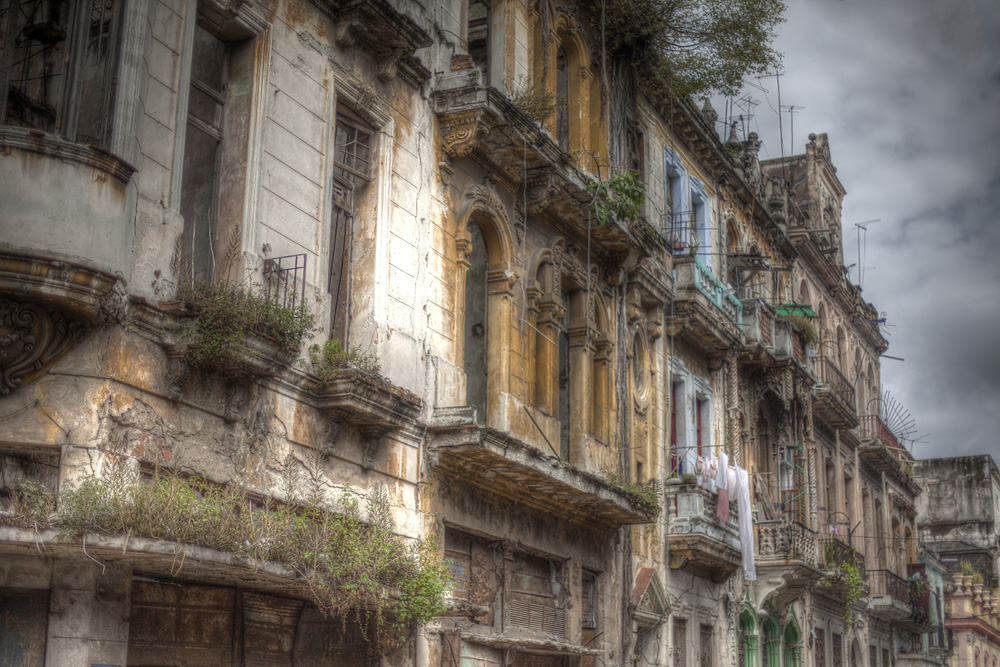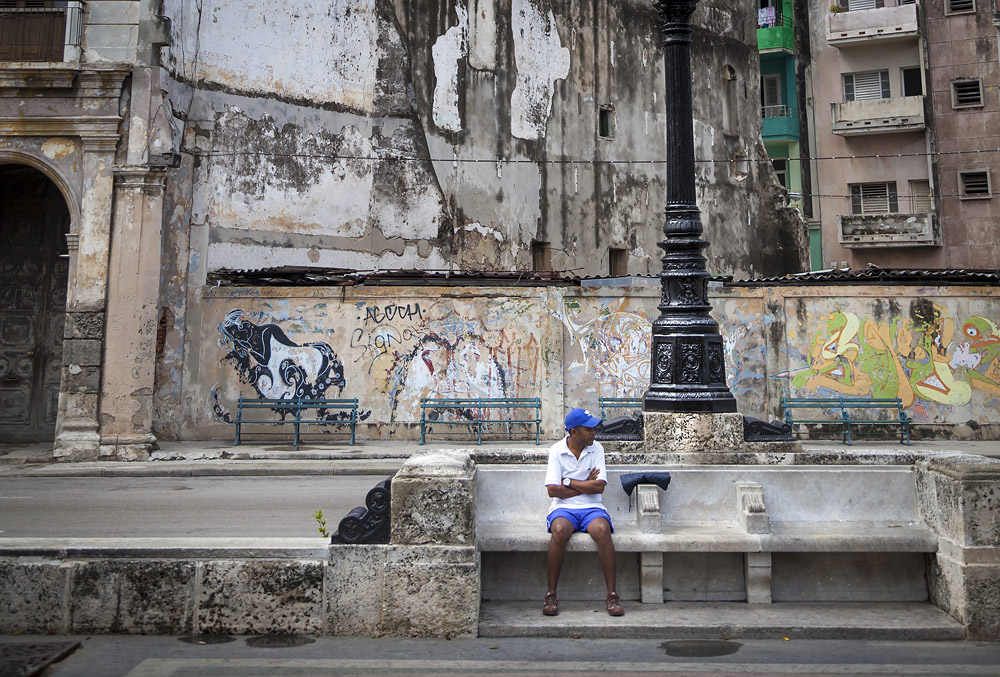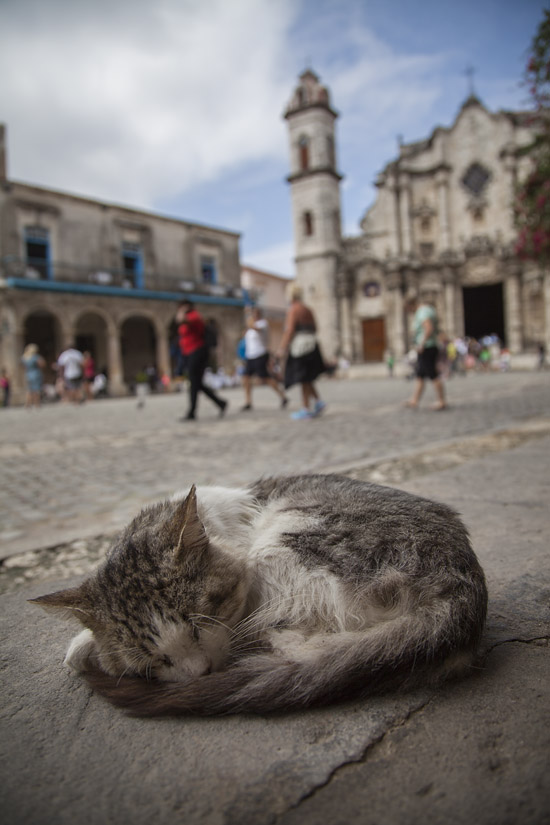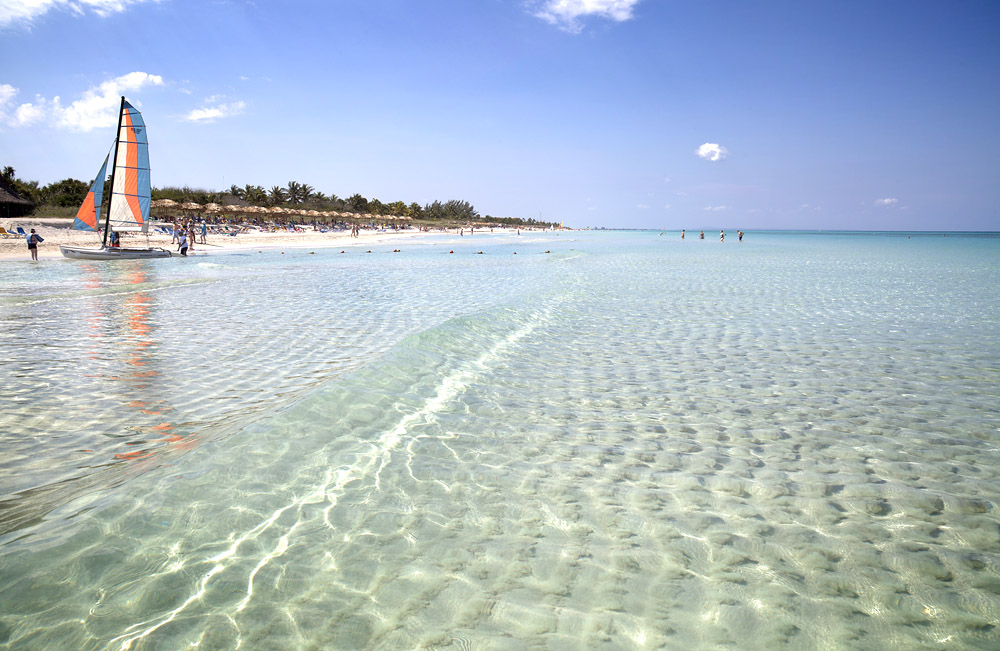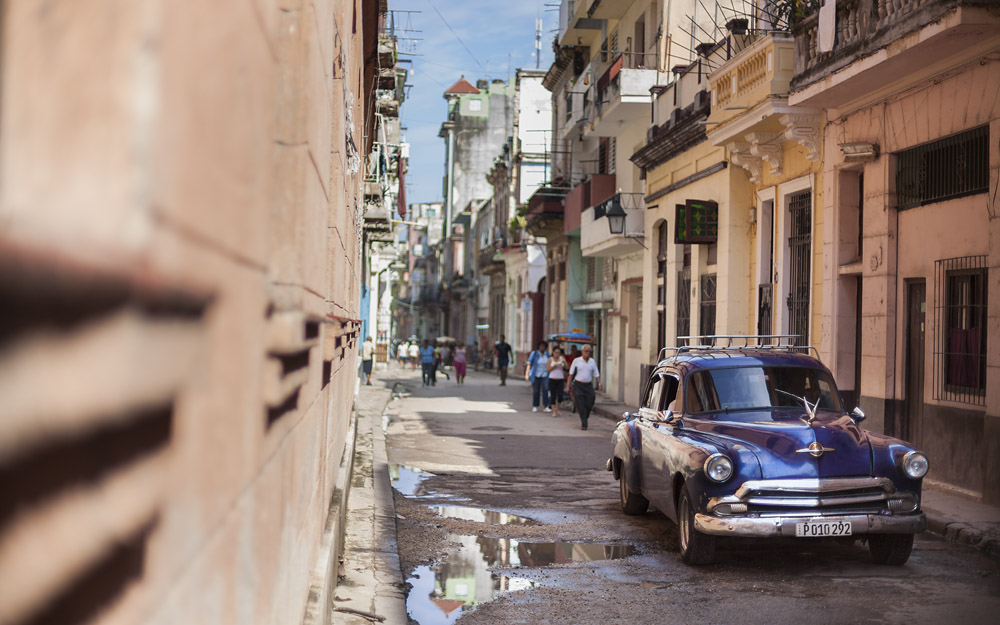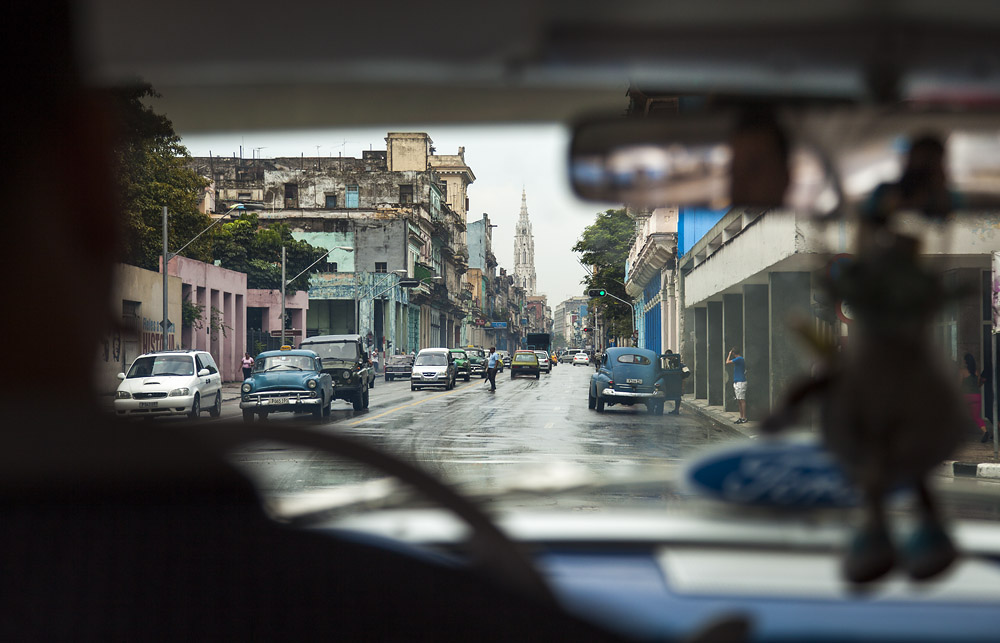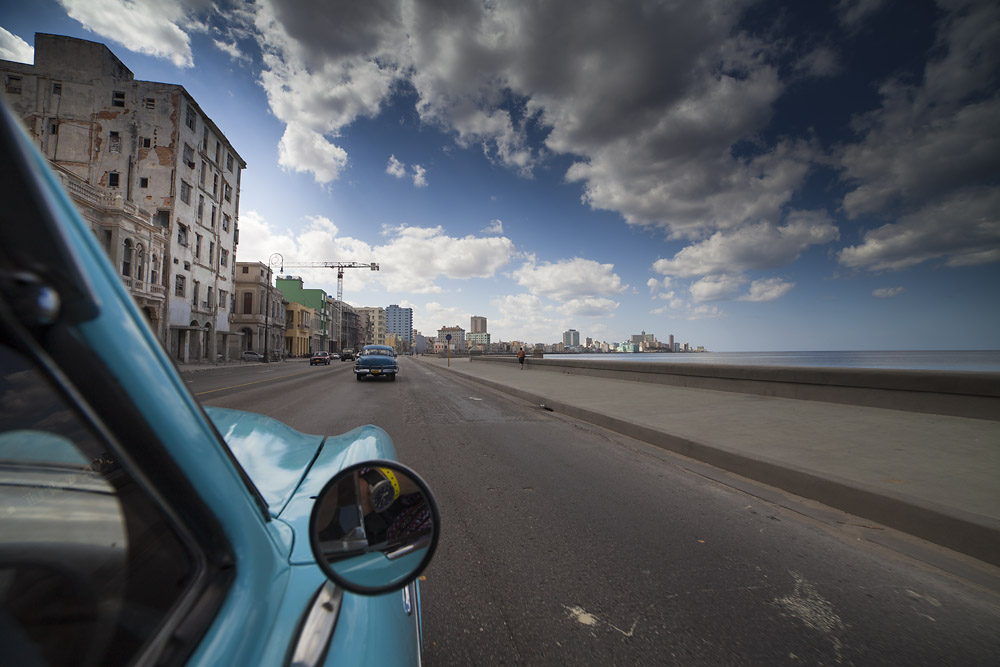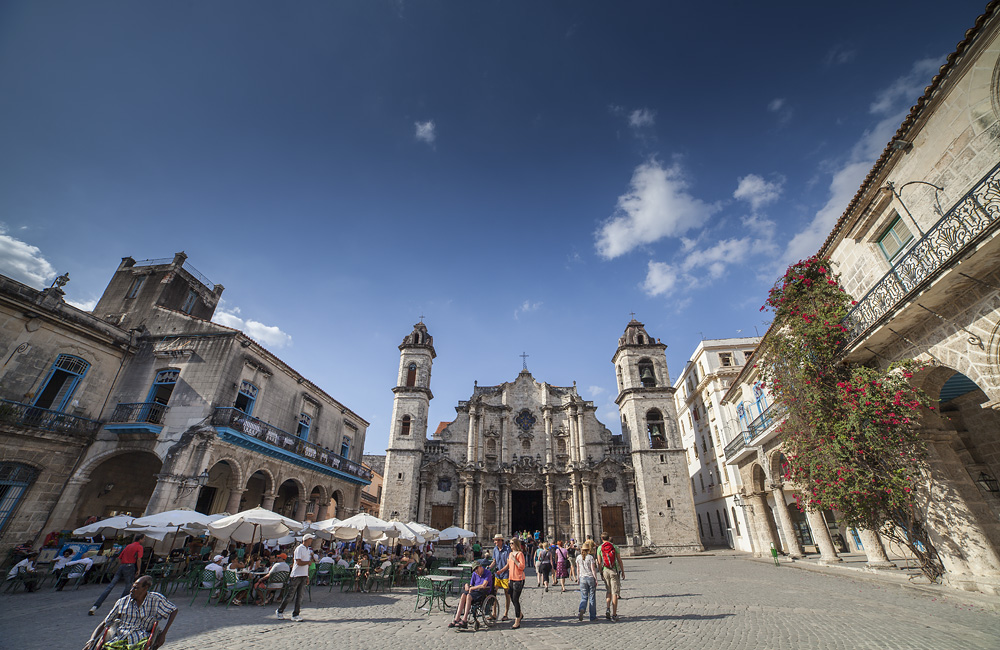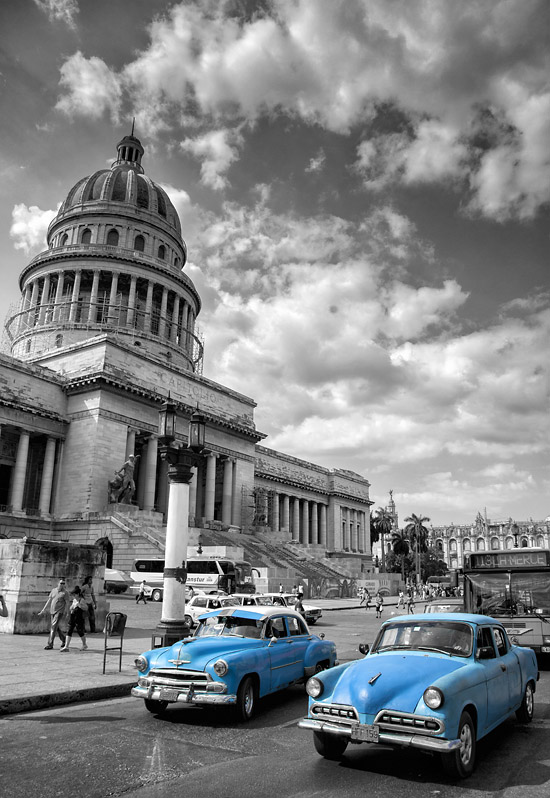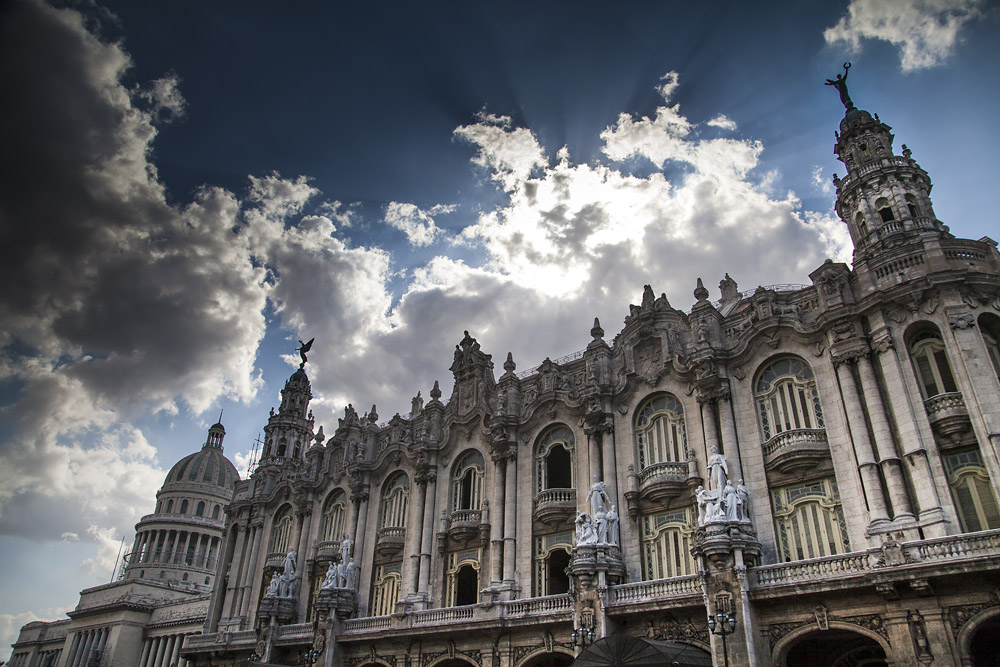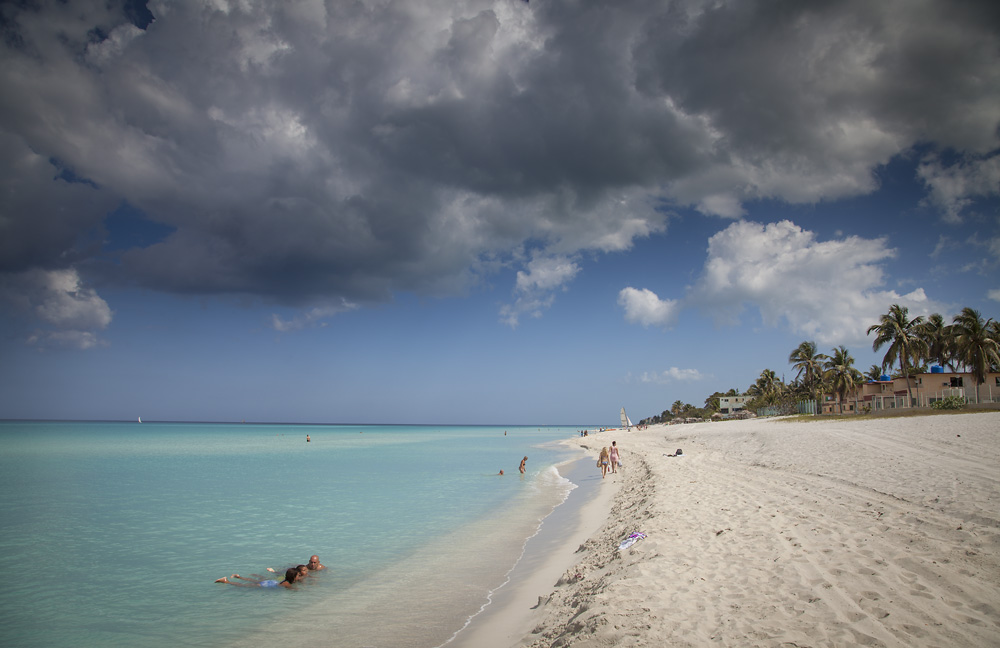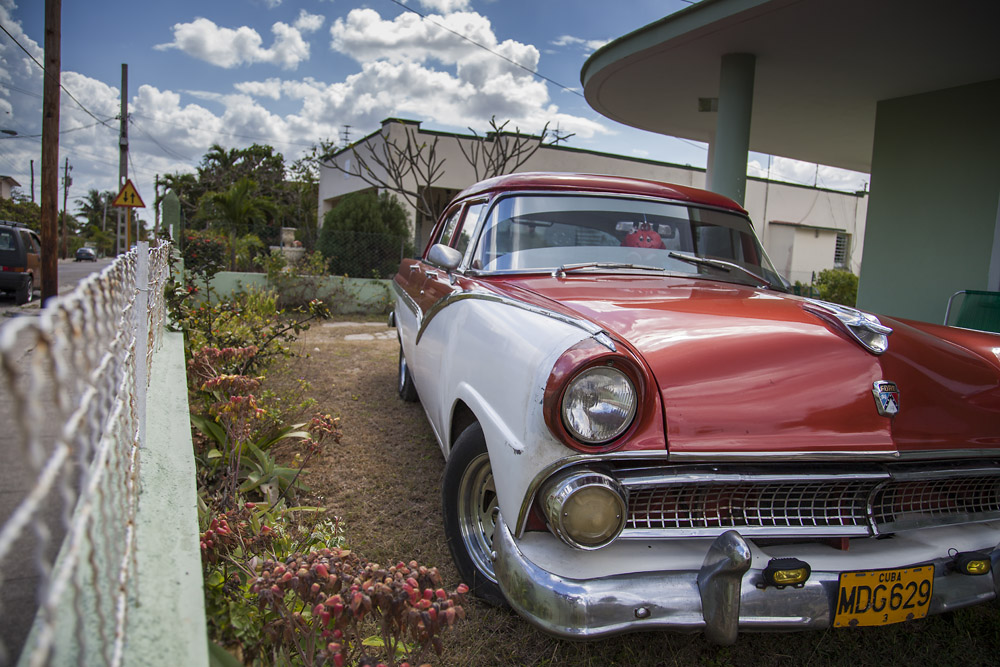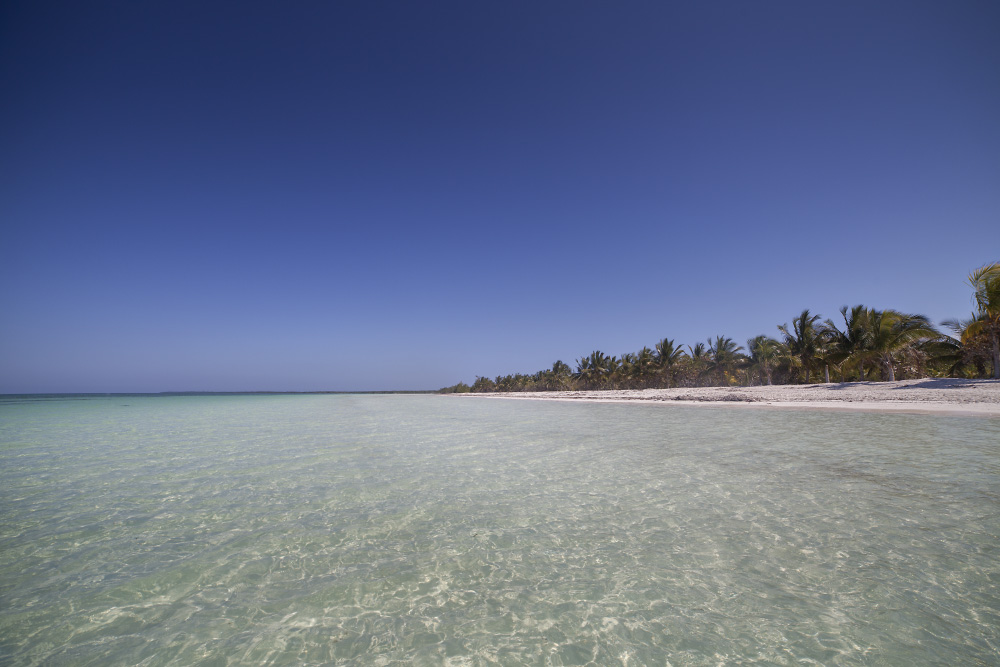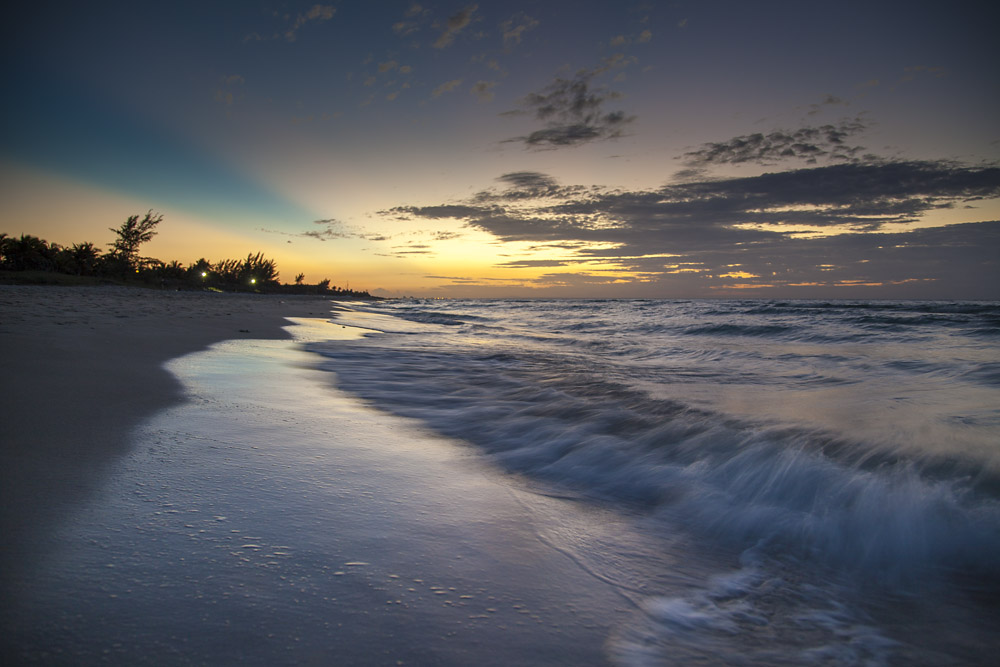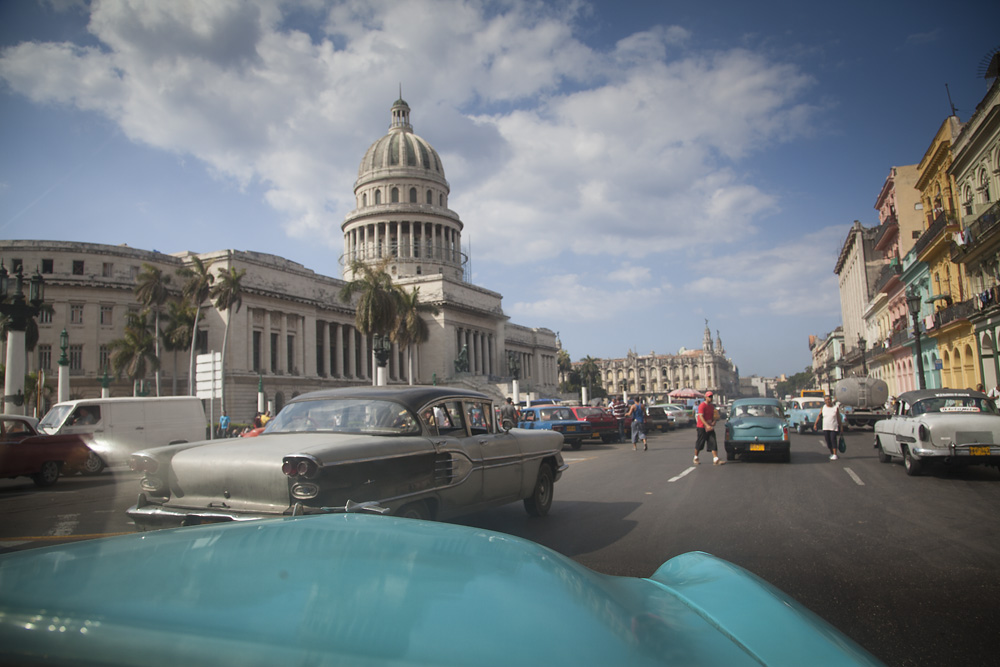Vibrant and Crumbling
With all the crumbling and overgrown buildings in Havana, there’s still the feeling of something grand, something remarkable in the architecture.
Underneath the trees on Paseo de Marti, I was reminded of the famous La Rambla in Barcelona. They both feature a grand pedestrian thruway, with marble benches and a dense canopy of trees insulating against the bustling city. Instead of hotels, shops and theaters like in Barcelona, however, there are many skeletons here in Havana. Some buildings have collapsed entirely. Most sit empty, or at least in disrepair. There are no buskers or shops yet along Paseo De Marti, although I get the feeling that may change as more economic reforms allow Cubans to open private businesses. Havana is an incredible city, but its potential is what’s really astonishing. Or is it just that, the fact that it’s so clearly a city deserving of some care, that makes it truly special? Elsewhere in Havana I ask the same questions; Along the powerful Malecon, in front of El Capitolio, in the plaza of the Havana Cathedral: Do I love Havana for it’s potential, or because it’s so special just the way it is?
Paseo de Marti
The Malecon
Cuba Tourism; Battle of Ideas in the Country Frozen in Time (updated with gallery)
In the past 15 years or so, tourism has surpassed sugar to become the number one industry of the island nation of Cuba. Not since the pre-revolution 1950’s has Cuba received so much wealth from international visitors.
Following the revolution, when private property and enterprises were deemed illegal by the new government, Tourism went from aproximately 350,000 visitors per year, to just 4,000. Most hotels, bars, and all casino’s were closed. They were seen as symbols for corruption, inequality, and a foreign pillaging of the country. The Hotel and Casino industry in the 1950’s was responsible for Cuba’s so called golden era, when the country was richer per capita than Spain or Japan. Havana in particular was the wealthiest city in the Caribbean, and at the time it was turning over more revenue dollars than the mighty Las Vegas. This wealth was hardly spread equally, however. It was a source of discontent – and empowered the ideology of Fidelismo leading the the revolution at the end of that decade.
There’s plenty of contradiction when, 50 years later, under the same regime that ousted that corrupt government of the 1950’s, hotels exclusively for the use of foreigners have again become the country’s top earners. The overwhelming majority of Cuba’s population has never stayed at any resort on the country’s soil. In the 1990’s when mass tourism began to return to Cuba, Fidel Castro was on the defensive as gross inequality returned to the island (Washington Post article). Tourism has undoubtedly helped Cuba emerge from a recession (and famine) in the wake of the Soviet Union’s demise, but has also brought a return of significant inequality to the nation. Contrary to the socialist ideals of the 1959 revolution, yet of unquestionable benefit to the population of Cuba, the final outcome of tourism and its influx of wealth into the country remains to be seen. The battle of ideas is still underway in the nation frozen in time.
You can follow this link for a gallery from Varadero/Matanzas.
Crumbling, vibrant Havana soon.
I will have new galleries from frequented Varadero, and crumbling, vibrant Havana soon.
Havana is majestic, and often tragic.
Havana is the capital of Cuba and historically, one of the most important cities in the Caribbean. It has seen several vastly different eras; the front door of the Spanish Colonial empire in the 1500s, A trade capital in 18th and 19th century, finally a haven for American smugglers, gamblers, and tourists in the 20th century – that is until 1959 when Castro’s communist revolution took power.
More than 50 years later, and Havana looks very much the way it did in on January first 1959. A standstill economy cut off from the outside world has left Havana, and Cuba, for better or for worse, in a surreal window to the past. Sometimes, Havana is beautiful. Sometimes it’s tragic. Follow this link to have a look.
On the shores, in Cuba.
In a way, I hate to start any set of pictures from Cuba with its beaches – the country is too complex and interesting to be simplified with captures from its most frequented tourist destinations. The country’s revolution, now some 50 years later, has endured to create, for better or for worse, in many ways one of the most unique countries on earth.
Traveling to Cuba is a different experience. It’s the only country I’ve visited with their own two separate currencies; one used almost exclusively for foreign visitors. Your car and hotel will both be built pre 1959 thanks to a strict embargo initiated by the United States – foreign goods are hard to come by in Cuba.
Cuba has a national history that is exceedingly interesting, with both Spanish and American occupations (and a war between those two countries on human soil), revolutions, isolation, and a missile crisis. Most of us will travel to Cuba for the beaches, which are indeed worth the trip. It doesn’t take much effort, however, to appreciate what makes Cuba truly soar.
Varadero is the premier tourist area in Cuba. A narrow peninsula lined with beaches stretches itself into the Atlantic. It may not be the world’s most exclusive beach, with a million visitors a year, but with clear turquoise water and 20km of white sand, it is no less beautiful.
Click Here for the gallery.
I’ll be back with some pictures of Havana, the 16th century Spanish colonial capital of the country.

